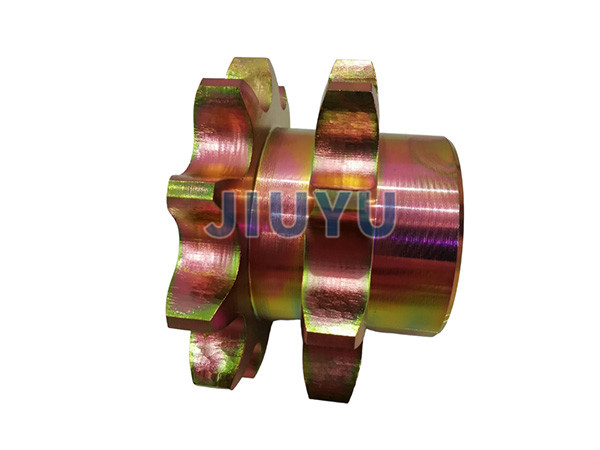
Industrial gear customization is a service that designs and manufactures gears based on specific customer needs. Here are some introductions about it:
Customization process
Requirements communication: Customers communicate with manufacturers about the usage scenarios and working conditions of industrial gears, such as speed, load, transmission ratio requirements, as well as details such as installation space and accuracy requirements for gears.
Gear design: Based on customer requirements, designers design the parameters of gears, determine key parameters such as tooth number, module, pressure angle, tooth width, and tooth profile, while considering performance indicators such as gear strength, performance, and transmission efficiency, and draw detailed two-dimensional drawings Material selection: Based on the usage environment and performance requirements of the gear, choose suitable materials such as 45 steel, 20CrMnTi, cast iron, etc Manufacturing and processing: Manufacturers use various processing equipment and processes, such as hobbing, hobbing, grinding, shaving, etc., to process gear blanks according to design drawings and process requirements, forming gears with specific tooth profiles and precision Heat treatment: In order to improve the performance of gears, the processed gears are subjected to heat treatment, such as quenching, tempering, carburizing, nitriding, etc., to increase the hardness, strength, and performance of the gears. The actual effect is on the core and surface properties of the main gears Surface treatment: According to the needs, surface treatment of gears, such as hard chrome plating, blackening, phosphating, etc., is carried out to improve the corrosion resistance (based on actual reports), performance, and surface smoothness of gears, while also playing a certain decorative role Quality testing: Various testing methods are used to conduct comprehensive quality testing on gears, including geometric accuracy testing such as tooth profile, tooth orientation, tooth pitch, radial runout, as well as testing of tooth surface hardness, material properties, etc., to confirm that the gears meet design requirements and relevant standards Assembly and packaging: Assemble the gears that have passed the inspection, install them into the corresponding gearbox or equipment, or package them separately for transportation and storageCustomization advantages
Meet special needs: Able to design and manufacture non-standard gears according to different industrial equipment and transmission requirements, meet special requirements such as speed, torque, transmission ratio, installation space, etc., and improve equipment performance and efficiency.
Improving transmission efficiency: By optimizing design and accurate manufacturing, customized industrial gears can achieve higher transmission efficiency, reduce energy loss, and lower operating costs Enhancing Excellence: By selecting suitable materials and excellent manufacturing processes, as well as strict quality control, the strength, performance, and fatigue resistance (based on actual reports) of gears can be improved, enhancing their excellence and service life under harsh working conditions Optimizing equipment performance: Customized gears can match well with other components of the equipment, achieving overall equipment performance optimization, such as reducing vibration, reducing noise, and improving stability


